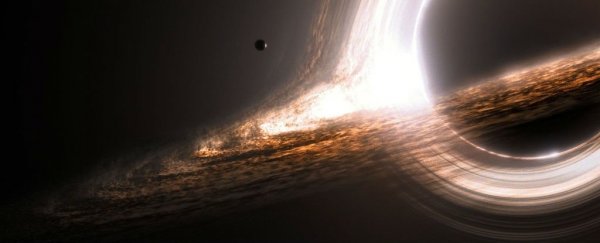One of the greatest dilemmas in astrophysics is the black hole paradox - if black holes really do destroy every scrap of information that enters them.
Now, physicists might have finally come up with a way to test the paradox once and for all, by accelerating a wave of negatively charged electrons through a cloud of plasma.
As far as objects in space go, black holes need little introduction. Get too close, and their concentrated mass will swallow you, never to return.
But in the 1970s, physicists including Stephen Hawking proposed that black holes weren't necessarily forever.
Thanks to the peculiarities of quantum mechanics, particles did indeed radiate away from black holes, Hawking hypothesised, which means, theoretically, black holes could slowly evaporate away over time.
This poses the paradox. Information - the fundamental coding of stuff in the Universe - can't just disappear. That's a big rule. But when a black hole evaporates away, where does its bellyful of information go?
A clue might be found in the nature of the radiation Hawking described. This form of radiation arises when a pair of virtual particles pops into existence right up against a black hole's line of no return - the 'event horizon'.
Usually, such paired particles cancel each other out, and the Universe is none the wiser. But in the case of Hawking radiation, one of these particles falls across the horizon into the gravitational grip of the black hole. The other barely escapes off into the Universe as a bona fide particle.
Physicists have theorised that this escaped particle preserves the information of its twin thanks to the quirks of quantum dynamics. In this case, the phenomenon of entanglement would allow the particles to continue share a connection, even separated by time and space, leaving a lasting legacy of whatever was devoured by the black hole.
To demonstrate this, physicists could catch a particle that has escaped a black hole's event horizon, and then wait for the black hole to spill its guts in many, many years, to test if there's indeed a correlation between one of the photons and its entangled twin. Which, let's face it, isn't exactly practical.
Now, Pisin Chen from the National Taiwan University and Gerard Mourou from École Polytechnique in France have described a slightly easier method.
They suggest that a high-tech 'accelerating mirror' should provide the same opportunity of separating entangled particles.
That sounds strange, but as a pair of particles zips into existence in this hypothetical experiment, one would reflect from the accelerating mirror as the other became trapped at the boundary. Just as it might happen in a black hole.
Once the mirror stopped moving, the 'trapped' photon would be freed, just as the energy would be released from a dying black hole.
Chen's and Mourou's mirror would be made by pulsing an X-ray laser through a cloud of ionised gas in a plasma wakefield accelerator. The pulse would leave a trail of negatively charged electrons, which would serve nicely as a mirror.
By altering the density of the plasma on a small enough scale, the 'mirror' would accelerate away from the laser pulse.
As clever as the concept is, the experiment is still in its 'thought bubble 'stage. Even with established methods and trusted equipment, entanglement is tricky business to measure.
And Hawking radiation itself has yet to be observed as an actual thing.
Yet Chen's and Mourou's model could feasibly be built using existing technology, and as the researchers point out in their paper, could also serve to test other hypotheses on the physics of black holes.
It sounds far more appealing than waiting until the end of time in front of a black hole, at least.
This research was published in Physical Review Letters.
